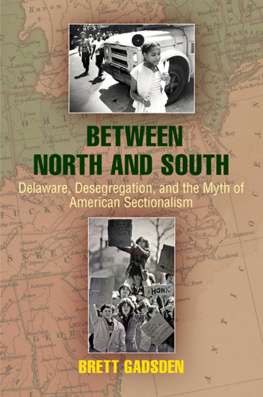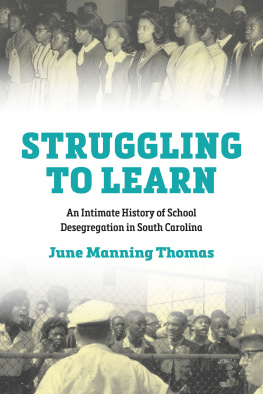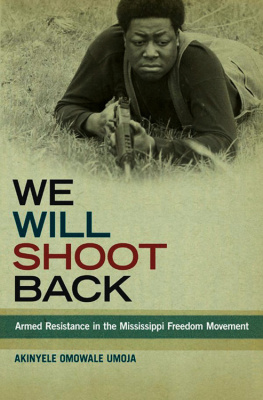Published by Louisiana State University Press
Copyright 2014 by Louisiana State University Press
All rights reserved
Manufactured in the United States of America
First printing
Designer: Barbara Neely Bourgoyne
Typefaces: Gotham, display; Ingeborg, text
Printer and binder: Maple Press
Library of Congress Cataloging-in-Publication Data
Katagiri, Yasuhiro, 1960
Black freedom, white resistance, and red menace : civil rights and anticommunism in the Jim Crow South / Yasuhiro Katagiri.
pages cm. (Making the modern South)
Includes bibliographical references and index.
ISBN 978-0-8071-5313-0 (cloth : alk. paper) ISBN 978-0-8071-5314-7 (pdf)
ISBN 978-0-8071-5315-4 (epub) ISBN 978-0-8071-5316-1 (mobi) 1. African Americans Civil rightsSouthern StatesHistory20th century. 2. Civil rights movementsSouthern StatesHistory20th century. 3. CommunismSouthern StatesHistory. 4. Southern StatesRace relations. 5. Southern StatesPolitics and government18651950. 6. Southern StatesPolitics and government1951 7. White supremacy movements Southern StatesHistory20th century. I. Title.
E185.61.K349 2013
323.1196'073075dc23
2013016131
The paper in this book meets the guidelines for permanence and durability of the Committee on Production Guidelines for Book Longevity of the Council on Library Resources.

To the memory of my mentor and friend, Makoto Saito;
and dearly and gratefully dedicated to
Yasohachi, Mikiko, Charles, Shirley, Brenda,
Akira Reuben, Aya Rebekah, and Ann Rachel,
who have nurtured me and shared their lives with me
as their son, husband, and father
Demagogues start out with a great plan,
something that looks like it will be very helpful to the general people,
but if they are too demagogic,
they will run the thing into the ground.
HARRY S. TRUMAN
For what is a man profited,
if he shall gain the whole world,
and lose his own soul?
MATTHEW 16:26
PREFACE
The American civil rights movement has often deservedly been regarded as one of the twentieth centurys most profound dramas, identified with proud and triumphant moments, as well as courageous and inspiring characters. The drama, to be sure, also provided us with sordid and horrifying images, and a cast of villains who played out their unsavory roles to the bitter end. And those villainsboth nationally recognized southern white segregationists and locally influential oneswere complicated men and women who, as the journalist John Blake has noted, were bound by their upbringings, personal beliefs, and the political reality and expediencies of their days.
In the summer of 1959, two Tennessee writersWilma Dykeman and James Stokelywho had together reported on a number of civil rights events, described what the South was up against almost two years after the 1957 Little Rock, Arkansas, school desegregation crisis. They observed that as the regions racial tensions involving integration coincided with Americas national survival fears in a Cold War environment, a monstrous no-mans land of uncertainty and suspicion had been created in the South by the cast of villains.
Resenting this ruling by the nations highest tribunal, white southernersboth politicians and ordinary citizens alikequickly responded by organizing the regions massive resistance to the effective and meaningful implementation of the Supreme Courts desegregation decree. The massive resisters were determined to defy the intent of the Court, delay Browns implementation, and possibly derail the germinating civil rights movement. Summing up the resentment felt among white southerners, the John W. Hamiltonled National Citizens Protective Association in St. Louis, Missouri, whose notoriously white-supremacist and anti-Semitic publication titled the White Sentinel attracted considerable support in the white South, circulated what one writer sarcastically called a poetic diamond. The amateurish anti-integration poem read in part:
Nine traitors to the white mans race
Sat in our Court Supreme,
And all agreed that whites and blacks
Must join their mongrel scheme....
.............................
A hundred million white men cry
That they will not obey
This traitor-law which would destroy
The white mans U.S.A.
Racism clearly lay at the heart of this resistance movement. Some white southerners argued that, compared to whites, the black race was inherently inferior in intelligence. Many jumped to the illogical conclusion that the ultimate objectives of the civil rights movement were race-mixing and the spread of miscegenation, mongrelization, and amalgamationwords that had been seldom heard before the Brown ruling. Furthermore, some advocated that racial segregation, perceived as crucial to perpetuating their cherished southern way of life, was God-ordained and predestined. Still others shamelessly resorted to physical intimidation and extreme violence to defend the Souths racial status quo. Many self-described thinking, respectable, and paternalistic white leaders in the South realized, however, that racism and racial prejudice alone could not garner enough support among the general white citizenry to defend segregation or to convince the federal government to leave them alone. In addition, despite their repeated provocative and inflammatory pronouncements, these southern leaders in politics and the press understood that unless they could effectively make the case to the rest of the nation for the white Souths resistance movement, their battle for racial integrity would be doomed to failure.
Even though southern segregationists utilized a broad range of weapons in waging their massive resistance, they depended upon two principal mainstays to sustain and reinforce their shared commitment to white supremacy. One of them was the resurrected theory of states rights constitutionalism. At the center of this theory lay the constitutional doctrine of interposition, intended to protect the rights and powers of the states in relation to those of the federal government. When I published my first book in Englishan acquired language of minein late 2001, The Mississippi State Sovereignty Commission: Civil Rights and States Rights, my analysis focused primarily on how Mississippisand, to a larger degree, the Southswhite politicians and officials carried out their massive resistance to defend racial segregation and discrimination in the name of states rights constitutionalism. To be sure, a segregationist anti-Communist discourse, as the second vital mainstay of massive resistance, also decried the evils of centralized government.
Following the publication of The Mississippi State Sovereignty Commission, I began to explore how and to what extent southern segregationists shrewdly resorted to the assertion that black southerners quests for social justice, political empowerment, and simple human dignity were nothing more than a foreign enterprisethe world Communist conspiracy directed and dominated by despicable outside agitators, race-mixers, and, worse, outright Communists and subversives. In this way, southern segregationists ironically ended up leading their societies toward what they outwardly decrieda form of quasi-totalitarianism where freedom of conscience, freedom of speech, and freedom of assembly were all curtailed in the name of racial conformity. And my exploration of this modern southern tragedy, which encompasses what the southern historian C. Vann Woodward once termed the burden of southern history, eventually led to the publication of this book as a sequel to my previous work.






